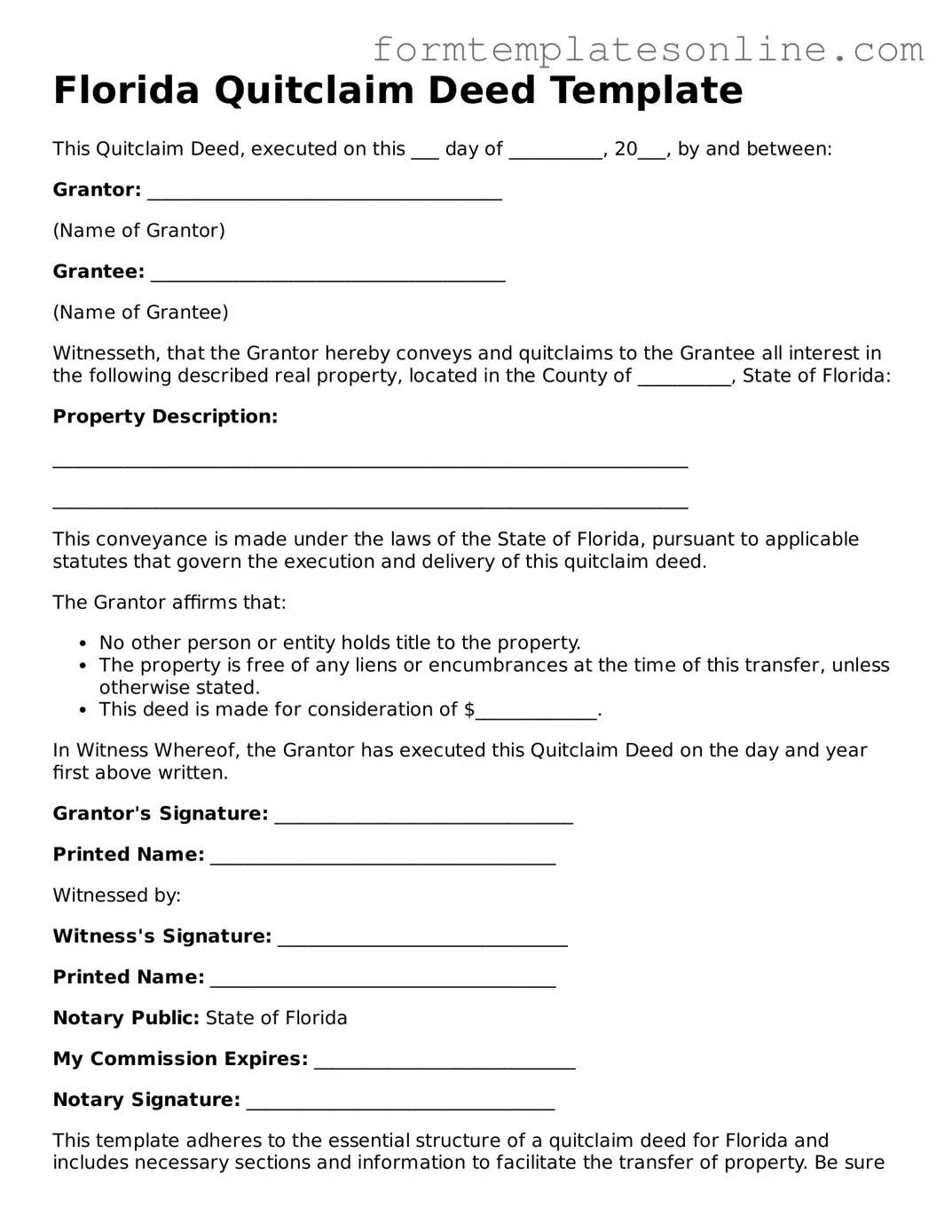Florida Quitclaim Deed Template
This Quitclaim Deed, executed on this ___ day of __________, 20___, by and between:
Grantor: ______________________________________
(Name of Grantor)
Grantee: ______________________________________
(Name of Grantee)
Witnesseth, that the Grantor hereby conveys and quitclaims to the Grantee all interest in the following described real property, located in the County of __________, State of Florida:
Property Description:
____________________________________________________________________
____________________________________________________________________
This conveyance is made under the laws of the State of Florida, pursuant to applicable statutes that govern the execution and delivery of this quitclaim deed.
The Grantor affirms that:
- No other person or entity holds title to the property.
- The property is free of any liens or encumbrances at the time of this transfer, unless otherwise stated.
- This deed is made for consideration of $_____________.
In Witness Whereof, the Grantor has executed this Quitclaim Deed on the day and year first above written.
Grantor's Signature: ________________________________
Printed Name: _____________________________________
Witnessed by:
Witness's Signature: _______________________________
Printed Name: _____________________________________
Notary Public: State of Florida
My Commission Expires: ____________________________
Notary Signature: _________________________________
This template adheres to the essential structure of a quitclaim deed for Florida and includes necessary sections and information to facilitate the transfer of property. Be sure to fill in the blanks accurately to ensure validity and compliance with local laws.
